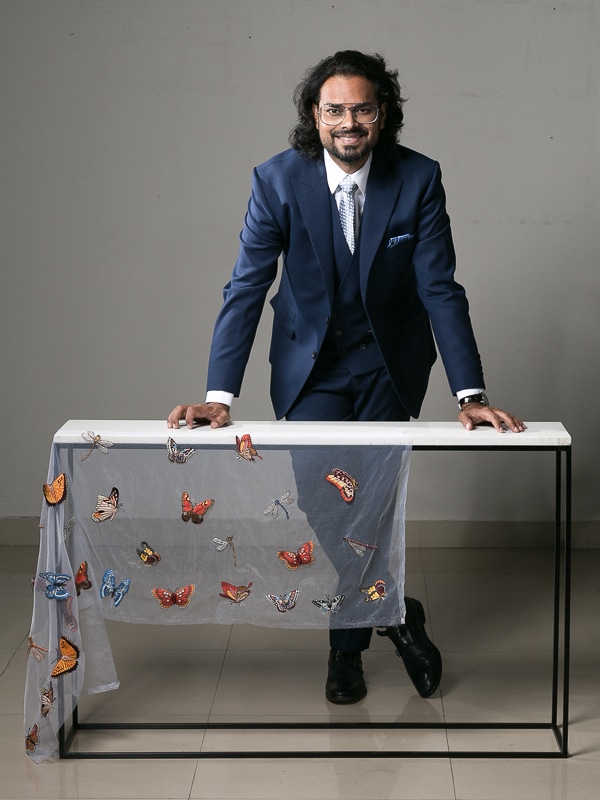
Human resilience is the biggest trend in couture fashion today: Rahul Mishra
Designer Rahul Mishra, who recently had his fourth showing at the Paris Haute Couture Week, on why we can no longer live in a utopian bubble, the power of the Chinese market and building a passive house
 Rahul Mishra
Rahul MishraImage: Madhu Kapparath
A simple black shirt, a black thread around the neck and an earnest smile —it all makes fashion designer Rahul Mishra look like the boy next door. But Mishra is anything but. He is the only Indian designer to have shown at the extremely prestigious Haute Couture Week–Paris four times. He did more business this quarter than in the same quarter before the pandemic in 2019. Known for his global contemporary take on traditional Indian crafts, he is a firm believer in taking things slow and says ready-to-wear fashion is unhealthy for both the fashion industry and the planet.
Over an hour-long Zoom conversation with Forbes India, the National Institute of Design alumnus spoke about everything from the inspiration behind his recent haute couture collection—The Shape of Air—shown at the Paris Haute Couture Week (July 5 to July 8, 2021) where he showcased his collection as a fashion film shot in India, to what India can do to put its haute couture on the world map.
Q. What does it take to show at the Paris Haute Couture Week, one of the most prestigious fashion events in the world?








